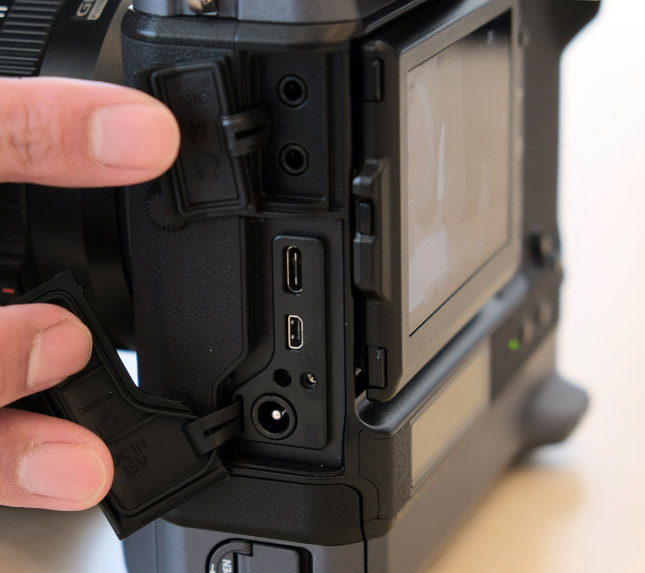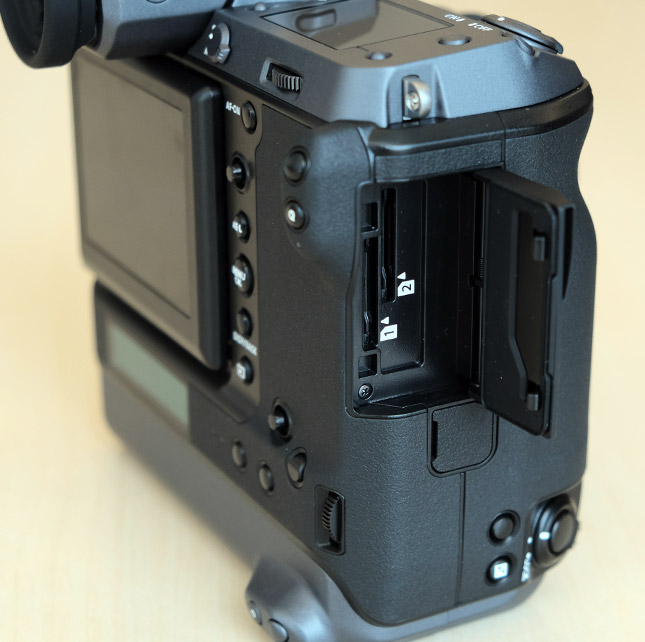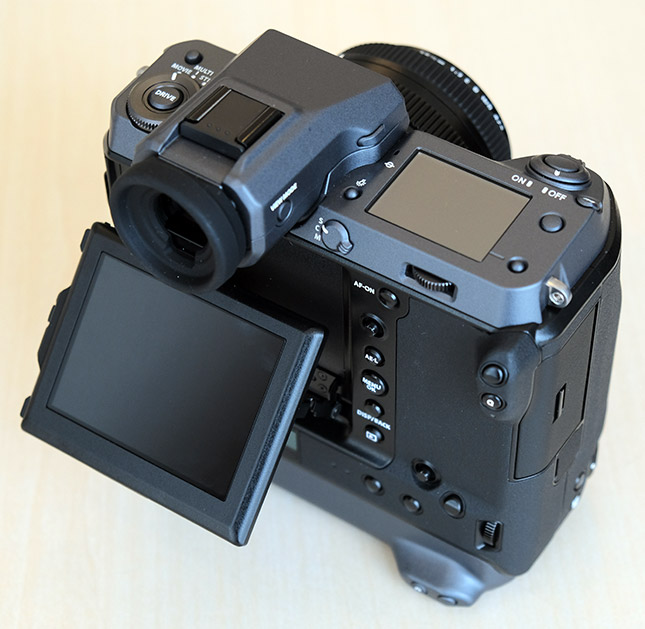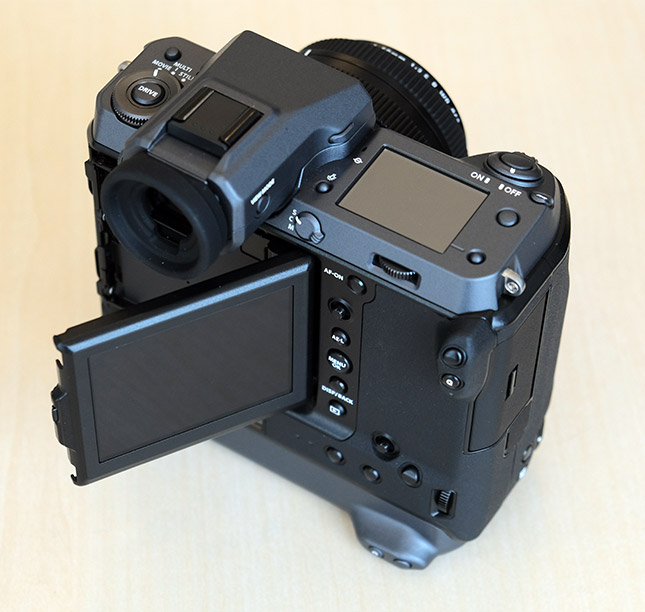CP+ 2019: Hands-on with the high-res, high-performance flagship Fujifilm GFX 100
posted Saturday, March 2, 2019 at 3:34 AM EDT
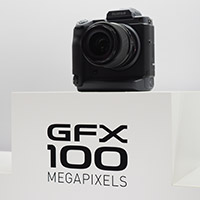
During the CP+ show here in Yokohama, we had a chance to sit down with Fujifilm executives and get up close and personal with the new Fuji GFX 100, Fujifilm's upcoming flagship GFX model that sports a 100-megapixel sensor. Although final details and full technical specifications are still unknown at this time, what we do know is that the GFX 100 is packing a lot of impressive technology and performance features never before seen on a medium format camera.
Physically, the Fuji GFX 100 is unlike other medium format cameras, sharing a body design with fixed vertical and horizontal grips that's more reminiscent a professional DSLR such as a Canon 1D-series body than the more blocky camera design of those from Phase One or Hasselblad. Like the GFX 50S, however, the top-mounted EVF is removable. The camera body is pretty thick with a deep, full hand grip, but is nonetheless thinner than the original GFX 50S. It's not so bulky that it's unwieldy, but rather, again, more akin to a professional gripped DSLR body when it comes to ergonomics, though it does feel larger than those types of DSLRs.

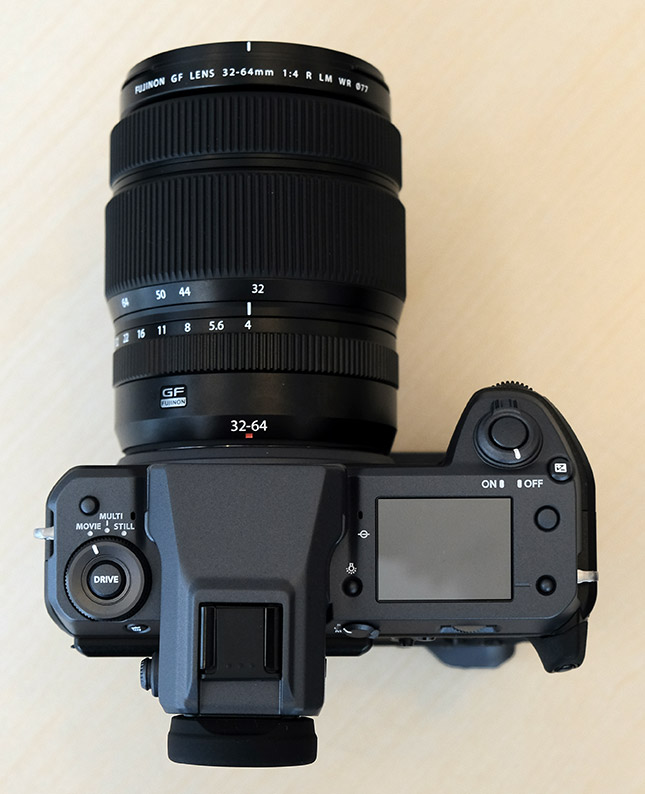
The larger gripped body design not only allows for easy portrait shooting and the use of two batteries -- using a cartridge system and the same battery packs as the GFX 50S -- but it's also a physical requirement for the technologies packed inside, one of which being the world's first in-body image stabilization system in a medium format camera. Fujifilm says that the number of stops of stabilization correction is still to be determined at this time, but nevertheless, it's very impressive from a technical standpoint that they are able to do this at all. The medium format sensor is extremely large and there's a lot of mass that has to be moved extremely precisely in order to maintain tack-sharp image quality. (Especially with a sensor resolution of 100 megapixels.) This is especially critical given the high-resolution of this particular sensor.
When it comes to the 100-megapixel sensor, there are other impressive specs beyond just the sheer resolving power with many technical innovations borrowing from the Fuji X-T3. The GFX 100's sensor is a back-illuminated design, which helps with light gathering efficiency and low-light performance. Furthermore, the sensor uses a copper wiring structure, much like that on the X-T3, which provides both higher readout speeds and lower power consumption. This is likely a key reason why the GFX 100 can offer 4K video recording capabilities.
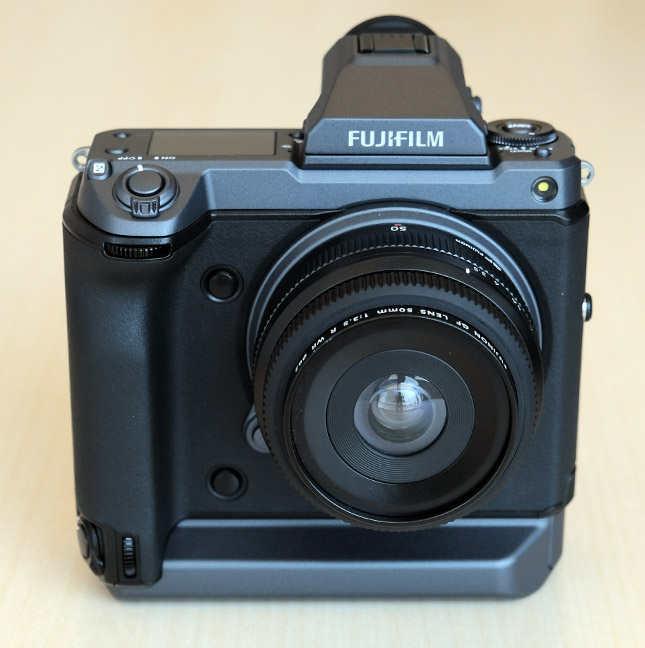
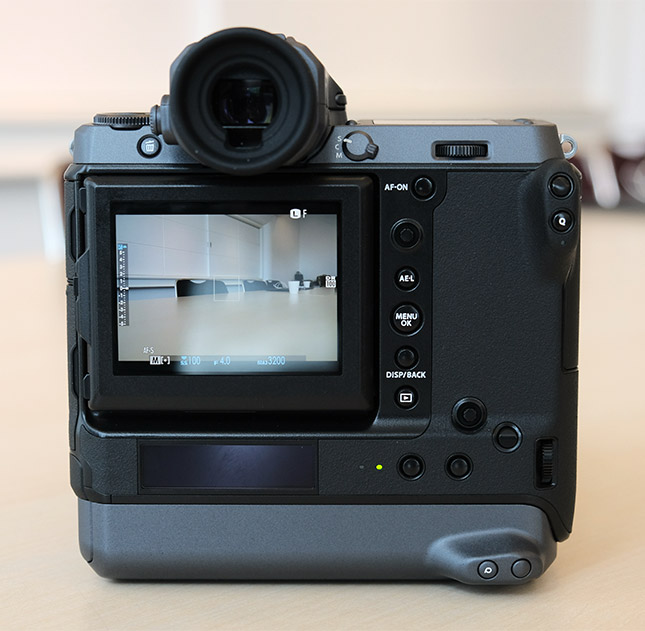
Also, while on-chip phase-detect AF has long been a feature of their APS-C bodies, the GFX 100 is the first medium format camera to use on-sensor phase-detection autofocus. The detailed AF architecture matches that of the X-T3, in terms of the sensor circuitry, the back-end processor, and the 100% frame coverage. The clever tricks Fujifilm uses to permit phase-detect focusing at very low light levels are also present, so the GFX 100 should have low-light AF ability very similar to the excellent levels achieved by the X-T3.
Again borrowing technology from the X-T3, the GFX 100's sensor can read out information from the phase-detect focus pixels and the image pixels entirely separately, which should be a particular help for AF performance during video recording. With this type of separate focus and image pixel readout capability, Fuji can optimize the exposure and readout speed of the focus pixels for better PDAF performance, without impacting the image data being read off the sensor.
This last strikes us a particularly significant. In low light levels, they can choose longer exposure times for the focus pixels, giving them more sure-footed but slower AF in dim conditions. Perhaps more significantly, though, under brighter lighting, they could potentially read out the focus data much faster than the video frame rate, leading to much more responsive AF and better tracking. When focus-pixel readout is tied to image readout, the AF system only gets to "look" at the subject as often as the image processor does. For 30fps video recording, this means the AF system can only "see" the subject every 1/30 second. With separate readout, though, the AF pixels could be read out two, three or more times faster, dramatically improving tracking speed and accuracy.
All this suggests that the GFX 100 should be a very capable video camera, particularly considering its ability to record 4K/30p 10-bit 4:2:0 internally, or 4:2:2 on an external recorder, via its HDMI port.

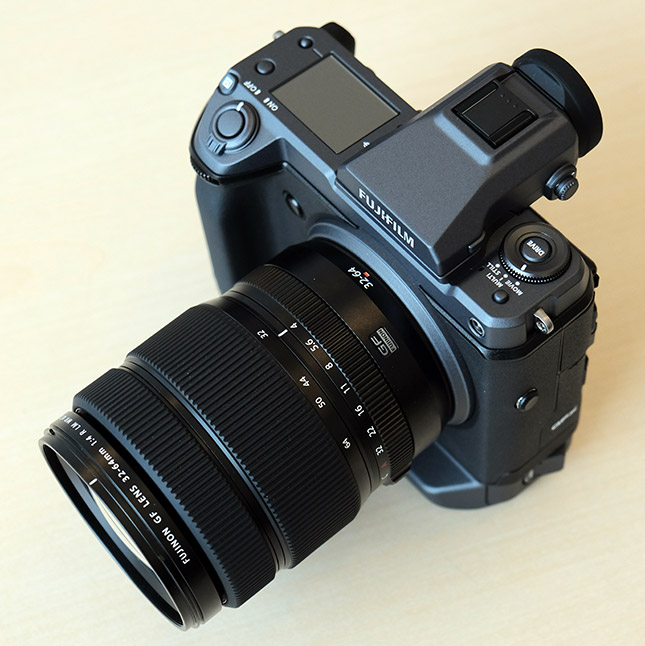
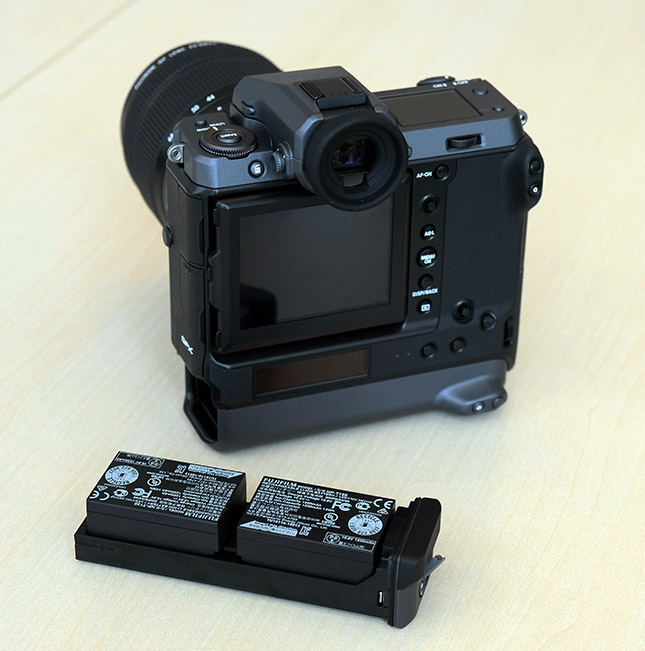
When it comes to pricing this flagship GFX model, the final retail price hasn't been determined, however, they are aiming for around the $10,000 mark. While the earlier development announcement mentioned an "early 2019" release timeframe, we learned just today that Fujifilm intends to launch the camera before the end of June of this year.
Fujifilm really shook up the medium-format camera world when they released the original GFX 50S back in the Fall of 2016, blowing the competition out of the water with its combination of image quality and low price. They further rocked the boat with the even lower-priced and much more compact GFX 50R, which is apparently selling beyond their expectations.
Now, the GFX 100 will bring an unprecedented combination of technologies and capabilities, including 100 megapixels of backside-illuminated imaging goodness, an extremely capable on-sensor phase detect AF system, and in-camera 10-bit 4K/30p video recording -- all for the low, low cost of $10,000. -- Well, "low cost" depends a lot on your budget and/or disposable income, but it's a truly astonishing price for a camera with the capabilities that the GFX 100 will sport.
(For comparison, the Hasselblad H6D-100C currently retails for an eye-watering $32,995. That camera does offer 4K/30p RAW video recording and 16-bit color, but with the GFX 100 hitting the market for less than a third the price, we wouldn't want to be Hasselblad right now :-0)
For our part, we can't wait to get our hands on a working sample, and you can bet we'll be quick to share the results with all of you when we do!
